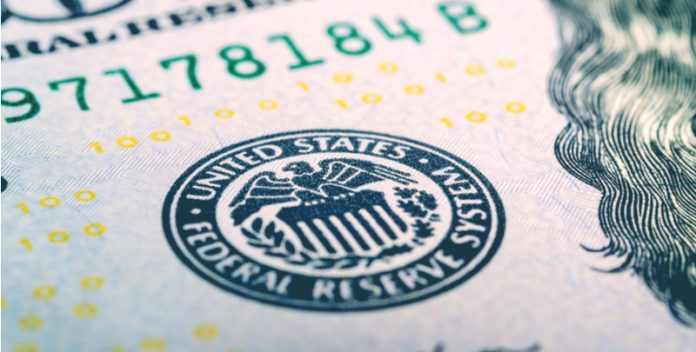Weak UK inflation data and a hawkish interest rate cut from the Federal Reserve ensured that the pound closed lower versus the dollar on Wednesday. The pound US dollar exchange rate dropped to a low of US$1.2440 before closing at US$1.2469. The pair is trending higher in early trade on Thursday.
| What do these figures mean? |
| When measuring the value of a pair of currencies, one set equals 1 unit and the other shows the current equivalent. As the market moves, the amount will vary from minute to minute.
For example, it could be written: 1 GBP = 1.28934 USD Here, £1 is equivalent to approximately $1.29. This specifically measures the pound’s worth against the dollar. If the US dollar amount increases in this pairing, it’s positive for the pound. Or, if you were looking at it the other way around: 1 USD = 0.77786 GBP In this example, $1 is equivalent to approximately £0.78. This measures the US dollar’s worth versus the British pound. If the sterling number gets larger, it’s good news for the dollar. |
Sterling was on the defensive across the session following weaker than expected UK inflation data. Inflation slumped to 1.7% in August, down from 2.1% in July. Inflation is now at the lowest level since late 2016. This will pile pressure on the Bank of England to cut rates after Brexit.
Brexit headlines also added pressure to the pound on Wednesday. Speaking in the European Parliament, European Commissioner President Jean-Claude Juncker stressed that time was running out to reach a Brexit deal. He said that there is a “palpable” risk that the UK could leave the European Union without a deal. The EU has given the UK government until the end of the month to come up with a new Brexit deal.
| Why is a “soft” Brexit better for sterling than a “hard” Brexit? |
| A soft Brexit implies anything less than UK’s complete withdrawal from the EU. For example, it could mean the UK retains some form of membership to the European Union single market in exchange for some free movement of people, i.e. immigration. This is considered more positive than a “hard” Brexit, which is a full severance from the EU. The reason “soft” is considered more pound-friendly is because the economic impact would be lower. If there is less negative impact on the economy, foreign investors will continue to invest in the UK. As investment requires local currency, this increased demand for the pound then boosts its value. |
Today investors will turn to the Bank of England (BoE) monetary policy rate announcement. Market participants are not expecting the central bank to announce a change to policy. The lack of clarity over Brexit is paralysing the BoE. However, the pound could still come under pressure, should the BoE drop its hawkish bias as some analysts expect.
Fed Cuts Rates By 0.25%
The dollar rallied in late trade on Wednesday following the monetary policy decision from the Fed. As market participants widely expected, the Federal Reserve cut interest rates by 0.25%. However, the Fed also signalled that it could stop there, with no further cuts through 2020. This would be despite continued uncertainty over trade and amid fierce pressure from President Trump to cut rates further. The outlook from the Fed was more hawkish than what investors had been expecting; as a result, the dollar rallied after the cut.
| Why do interest rate cuts drag on a currency’s value? |
| Interest rates are key to understanding exchange rate movements. Those who have large sums of money to invest want the highest return on their investments. Lower interest rate environments tend to offer lower yields. So, if the interest rate or at least the interest rate expectation of a country is relatively lower compared to another, then foreign investors look to pull their capital out and invest elsewhere. Large corporations and investors sell out of local currency to invest elsewhere. More local currency is available as the demand of that currency declines, dragging the value lower. |
Interestingly, there was growing disagreement within the Federal Reserve Open Committee over the changing economic conditions. One policy maker voted for a deeper cut of 0.5%. Two other voted to keep rates unchanged.
Today investors will continues digesting the Federal Reserve’s decision. The bottom line according to the Fed’s actions is that the US economy is not in such as bad position. Investors could pay some attention to US jobless claims and US existing home sales data.





